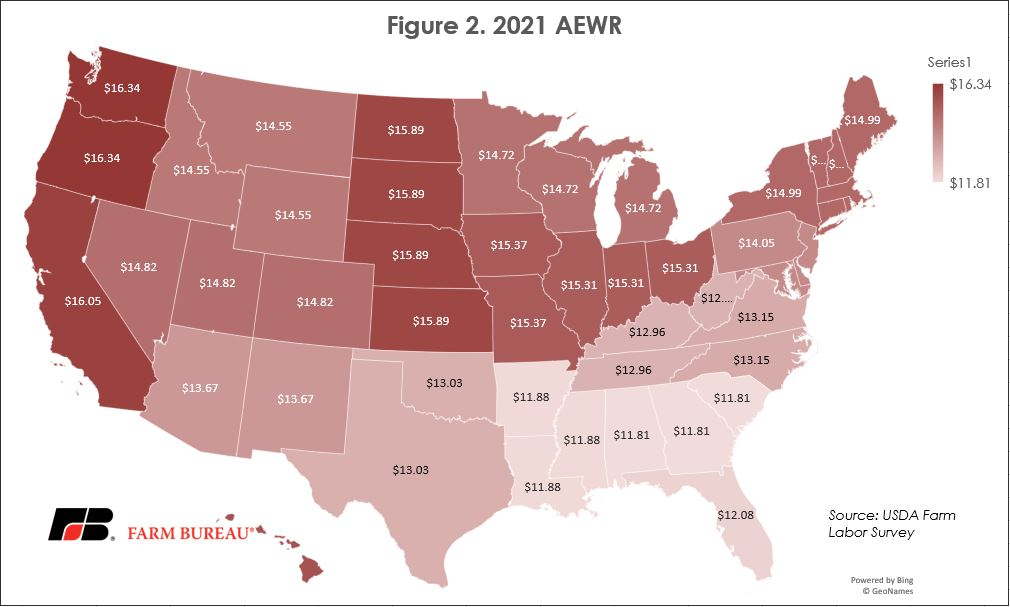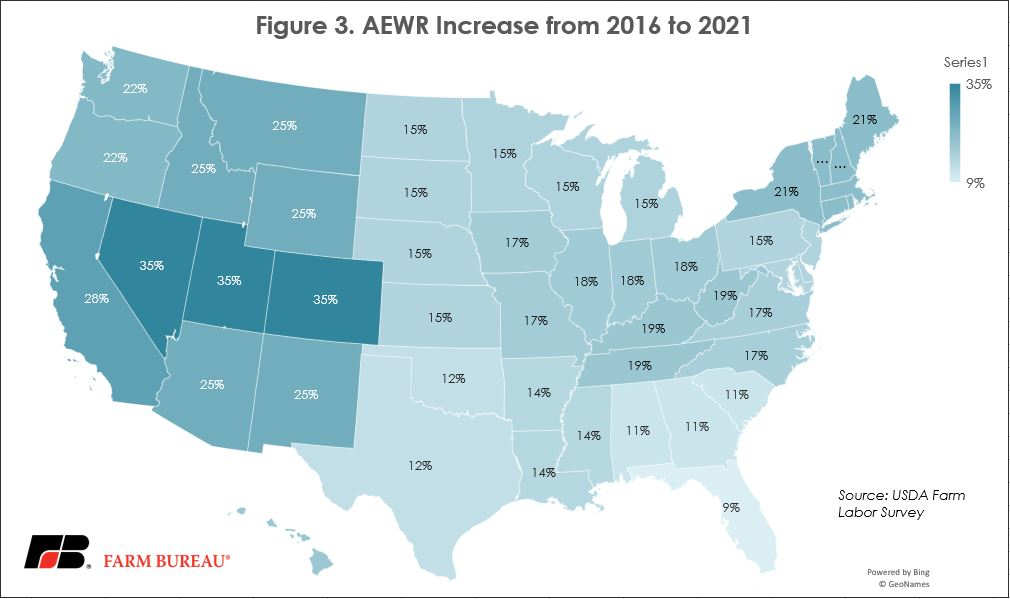THE 2021 AEWR FINALLY REVEALED
Author
Published
2/28/2021
With the release of USDA’s Farm Labor Survey on February 11, farmers that utilize the H-2A program finally know the minimum wage they must pay their H-2A workers in 2021. Usually, this wage rate, known as the Adverse Effect Wage Rate, is known when the Farm Labor Survey is released in November, but changes in policy that were proposed and then struck down in the courts over the last four months delayed the Farm Labor Survey’s release, which in turn held up the AEWR announcement. The FLS reveals an average increase of $0.63 per hour, or 4.5%, from 2020 to 2021, though there are considerable regional differences.
Why the Delay?
In fall 2020, the process of amending the wage methodology for the H-2A program began. First, in September, USDA issued a notice that it would no longer conduct the Farm Labor Survey, which is typically carried out in April and October and released in May and November, respectively. This change was important because the Department of Labor uses the data from the two surveys to calculate the annual national average gross wage rate for field and livestock workers, which becomes the AEWR. The annual national average gross wage rate for field and livestock workers is included in the November FLS report. Second, in November, DOL announced a final rule that would have updated the methodology for determining the annual AEWR in the H-2A visa program. Both actions were challenged in court by farmworker organizations.
The methodology changes never went into effect because on December 23, a federal court in California ruled against the implementation of DOL’s final rule to alter the methodology used to calculate the AEWR for the H-2A program. The judge’s decision required DOL to issue the 2021 AEWR by February 25. In a separate court decision, a judge ordered USDA to reinstate the FLS. As a result of the court rulings, none of the changes to the wage methodology for the H-2A program will be implemented.
Now, Those Wages
According to the FLS, the annual national average gross wage rate for field and livestock workers was $14.62 in 2020, up $0.63, or 4.5%, from $13.99 in 2019. By comparison, according to the BLS’ Employment Cost Index, nationally, compensation costs for private industry workers increased 2.6% for the 12-month period ending in December 2020.
While this is interesting, what really matters for the H-2A program are the regional annual average gross wage rate for field and livestock workers, which serve as the basis for the AEWR. As we have reported multiple times throughout the years, the rate of change from region-to-region varied considerably in 2020. The state of California, which is its own region, had the largest increase – jumping $1.28/hour, or 8.7%, above 2019. Meanwhile, wages in the Delta region (Arkansas, Louisiana and Mississippi) had the smallest increase - 5 cents/hour, or 0.4%, above 2019. All but three (Delta, Southeast and Lake) of the 18 regions in the FLS exceeded the ECI’s 2.6% increase. Hourly AEWR wages now exceed $12/hour in all regions except the Delta and Southeast.




The Long View
While a 4.5% single-year increase is sizable, the 2021 AEWR jump comes on the heels of several years of considerable wage rate increases. Over the last five years, the national average AEWR has increased by 20%, and even higher -- 35% -- in Utah and the Rocky Mountain states. Again, however, regional wages are what really count. From this perspective, depending on the region, wages have increased between 9% and 35% over the last five years.


Want more news on this topic? Farm Bureau members may subscribe for a free email news service, featuring the farm and rural topics that interest them most!
